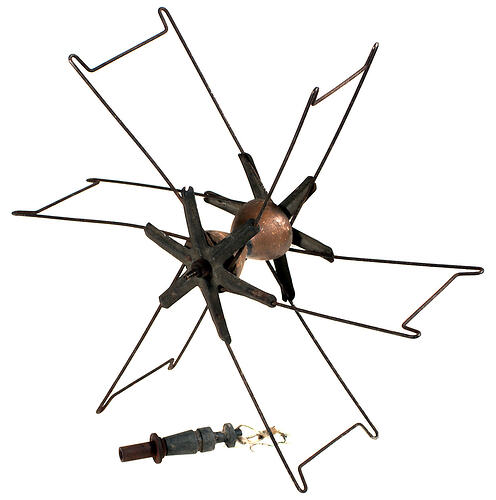Summary
Wool winder made of wood and metal. The winder would have been supported at the centre during operation - possibly with the use of the separate metal shaft, one end of which might have been placed over the pin at the centre of the spindle, and the other pushed into a corresponding hole in another object.
Part of a collection of textiles spinning objects, including a wooden hand-operated floor loom dating from circa 1900-1920 that was used in Geelong, Victoria, to support the rehabilitation of returned soldiers after World War I. The soldiers wove 'RSL tweed' which was sold for 3/6 a yard. The business grew into a commercial woollen mill in Geelong. The loom and associated objects were later purchased by donor who repaired and used it in Ringwood until 1990.
Physical Description
Wool winder made of wood and metal. In the centre is an hour-glass shaped wooden spool. Extending outward from this are six metal framed vanes. Attached to the spool by a cream cotton threads is a shaped metal shaft.
More Information
-
Collecting Areas
-
Acquisition Information
Purchase
-
Date Used
circa 1900-1940
Date based on provenance of other material from this donor and appearance. -
Classification
-
Category
-
Discipline
-
Type of item
-
overall dimensions
45.5 cm (Length), 45.5 cm (Width), 18.5 cm (Height)
-
Keywords
World War I, 1914-1918, Rehabilitation, Handcrafts, Military History, War Veterans
